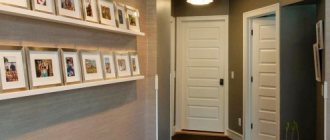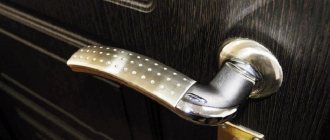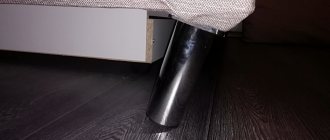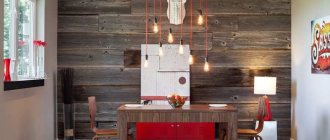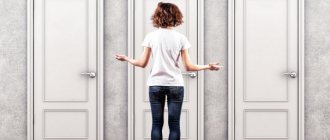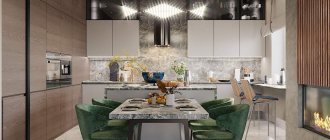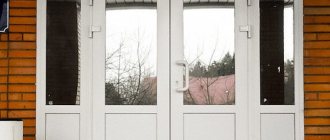Sooner or later, every person is faced with the need to repair their home. There can be many reasons for this. Some want to make their home more cozy and comfortable to live in, while others purchased an apartment without finishing. And here a very important question arises: what to do first - glue the wallpaper or install the door? If you do not follow the correct sequence of work, the end result may be sad. Therefore, let's look at this in more detail and find out what professionals think about this.
Preparatory stage
So, what comes first: doors or wallpaper? The answer to this question will be revealed in detail below. For now, let's talk about where to start repairing. First of all, you must draw up a detailed project that will allow you to determine the scope of work, as well as calculate the required amount of materials and funds. As soon as a detailed drawing with the layout of the rooms and the future location of the furniture is ready, you can proceed directly to the main work. Remove old coverings from the walls and remove all objects that may bother you. If this is not possible, then you should place them in the center of the room and cover them with film.
Many people are interested in the question of what is done first - doors or wallpaper, when redecorating. It all depends on what exactly you want. But first of all, you should worry about the safety of old materials. The floor should be covered with newspapers, and additionally with film on top, which is fixed with tape. You also need to remove all switches and sockets.
If a major renovation is planned, then the old coatings are completely removed, and the working surfaces are cleaned, leveled and primed. If there are large cracks on the walls, they should be repaired in several layers. If there are large defects for plastering, it is better to use building mixtures made on the basis of sand and cement.
Advantages and disadvantages
In the question of what comes first, wallpaper or doors, each option has its own advantages and probable risks of poor quality work. It is very important to take into account the structure and type of wallpaper, the quality of the finish and the presence of protective coatings on the doors. Let's try to evaluate these indicators and figure out what is better and more correct - finishing the walls first or installing interior doors right away.
Doors first
Craftsmen who claim that you need to install the doors first and then glue the wallpaper base their opinion on the following factors:
Among the disadvantages are:
Looking at the pros and cons outlined above, we can say that installing doors before wallpapering is more preferable and is unlikely to create trouble . But possible dust settling and drafts can create problems. With the door already installed, all cracks are sealed with foam and closed. This option eliminates the possibility of damage to the wallpaper near the door, as, for example, when installing a box. The installation of slopes will not lead to the plaster mortar getting onto the covered wall.
Wallpaper first
Wallpapering before installing interior doors has three important positive factors, which supporters of this method refer to:
Typically, pasted wallpaper dries completely in 2-4 days. At this time, the humidity level in the room rises and can create some discomfort for residents. The absence of a door will ensure more active drying without drafts, only through natural exhaust channels.
As you can see, the evidence of benefits in this case is based on preserving the door frame, without mentioning that wallpaper and other materials are also expensive. Therefore, let's talk about the disadvantages, of which there are noticeably more:
As a result, we can conclude that wallpapering and then installing doors will give worse results. Although it is quite acceptable.
General information about repairs
What comes first - doors or wallpaper? It is very difficult to answer this question unambiguously, since everything here depends on several nuances. To do everything efficiently, you must adhere to the following rules:
- Wall repair. Before wallpapering, the work surface must be plastered. This work should begin before installing the flooring and installing the cornices.
- Door installation. Everything is ambiguous here. Installation can be done both before and after finishing the walls. But what's the right way? Professionals recommend: first wallpaper, then doors. This will minimize the likelihood of damage, as well as hide some visual defects and irregularities.
- Wiring. Recently, more and more often, cables are laid in a hidden way, which involves gating walls. Therefore, this work should be done at the very beginning of the repair.
- Ceiling finishing. It is best to do this immediately after installing the electrical wiring. If you stick wallpaper on first, you can damage it later, resulting in everything having to be redone.
To avoid the question of what comes first - interior doors or wallpaper, during the renovation process simply follow the above recommendations. Thanks to them, no problems should arise.
Pasting methods
If you previously had the simplest paper sheets glued on, then removing them from the wall is easy:
- You need to moisten the surface generously with water and wait about 15-20 minutes.
- Then, using smooth movements, starting from the ceiling, remove the previous coating.
- If the walls were previously covered with waterproof materials, you will have to work with a spatula.
Previously, we started wallpapering from the window. This is due to the fact that the wallpaper was glued overlapping each other. To hide unwanted defects, all work began from the most illuminated place in the room.
But there is also an equally popular method of gluing from the door. It is suitable for applying vertical stripes to the surface. The slopes of all doors are strictly proportional and have the greatest vertical height. It’s easier to focus on the doorway in order to stick the strips evenly.
Now there are no such problems with joining the canvases, so it is better to choose the simplest method and start covering the walls from the doorway.
Around the doorway
- First you need to cut the strips to the desired length. Then you need to attach it to the already pasted canvas without a gap.
- Make diagonal cuts where the door casing is attached. Remove the excess part of the wallpaper, otherwise it will interfere with the pasting. Don't leave too much margin at the top or bottom - it will be very difficult to hide them behind the door trim.
- Press the material firmly against the wall. Start smoothing with a roller, starting strictly from the center, using smooth movements.
- If there is still excess left, then get rid of it with a stationery knife. Please note that the blade should be as sharp as possible, since wet coatings are not easy to trim.
- Remove excess glue with a sponge or rag. If the wallpaper is not paper, you can moisten it a little with water. To completely hide the excess under the casing and not leave any gaps, it is enough to make an allowance of 2-2.5 cm.
- To push the wallpaper under the casing, use a special wide metal spatula.
On the slopes
When you get to pasting the door slopes, hurry up and immediately stick the next panel. It is necessary to bring the wallpaper to the slope so that the canvas overlaps the door opening. It will be much more convenient if the width of the roll is wider than the slope. If you can’t do this, then you need to stick a narrow strip of wallpaper on the open area. Measurements must be taken very accurately so that the strip is glued end to end.
It is worth considering that the coating should extend slightly onto the door frame.
It is necessary to cut the canvas vertically so that it extends a little further than the corner line, about 2-3 cm, and cut off the excess. On the opposite side of the door slope we do the same.
All that remains is to paste over the area in the middle of the doorway. It must be accurately measured and a piece of the required size cut from the roll. We must remember that the wallpaper should extend onto the inside of the slope and onto the door frame.
Below is a visual video about how to glue wallpaper on slopes:
Door installation
They are one of the main decorative elements of any living space, regardless of its purpose. That is why the question of what comes first - the doors are installed or the wallpaper is glued is very important. As noted above, installation can be done at any time, but it is best to adhere to the following sequence:
- Ceiling finishing.
- Wallpaper sticker.
- Laying flooring.
- Installation of interior doors.
This algorithm of actions is good for its simplicity and speed of work. However, you must be extremely careful, since carelessness or an absurd accident can damage the floor covering. When installing door structures, before laying the laminate, you need to very accurately calculate the amount of space for the threshold. It will be quite difficult to do this without special skills, so it is better to stick to the scheme described above.
Wallpaper first
Anyone who has glued wallpaper at least once in their life knows how difficult it is to do it around the door. Pasting the corners will look like flowers. A free opening from the door frame is a definite plus when doing the work yourself.
Wallpapering should be done after all the “dirty” work has been carried out, while the installed doors should be gradually covered with plastic film Source Rerate.ru
Trimming wallpaper immediately after gluing is not an easy task. When installing a cheap door, there is a risk of delamination of the materials of the door frame and leaf when wet wallpaper comes into contact with its surface.
Wall decoration
So, you already know what comes first: doors or wallpaper. Once you've finished the ceiling and laid the flooring, you can start working on the walls. This should be taken very seriously, because the comfort and coziness of the room largely depend on them. It is the walls that are responsible for heat retention and sound insulation. Today there are the following finishing options:
- ordinary paper wallpaper;
- photo wallpaper;
- fabric coverings;
- acrylic;
- metallic wallpaper;
- cork wallpaper;
- glass wallpaper.
Which option to choose is up to you. Each of them has certain advantages and disadvantages, as well as different costs. You must be guided by your own goals and financial capabilities.
Before or during
Entrance doors can be installed not before the start of repairs and not after its completion, but during - immediately after the completion of the main rough work. At what specific stage of repair to install the front door is decided in each specific case individually.
The metal door coating is protected from dirt, dust, paint and mechanical damage using a vacuum film. It is better to entrust the packaging to professionals so that the locking mechanisms are reliably protected. After completing the repair and removing the film, call a technician to check the operation of the locks.
In addition, many manufacturers provide the possibility of installing a metal door without an internal decorative panel (or with its basic version). The main panel is installed after the repair is completed.
Ceiling finishing
You have already become familiar with the fact that doors or wallpaper come first. But this knowledge is not enough to carry out quality repairs. You will also need to select materials. As for the ceiling, suspended structures are the most popular. Among their main advantages are:
- a light weight;
- ease of installation;
- long service life;
- environmental friendliness;
- ease of care.
But the main advantage is the speed of installation. The main rule when working with such ceilings is fastening after wallpapering.
Useful tips
Recommendations to help simplify the gluing process:
- It is better to paste wallpaper behind radiators and vertical heating pipes right away, while you have fresh energy, so as not to suffer later.
- Before work, you need to turn off the power to the apartment, remove the covers from the sockets in order to glue the canvas directly onto them. After the wallpaper has dried, the holes are carefully cut out and the socket housings are put back in place.
- You can seal uneven joints near the ceiling using borders.
- When working with external corners, it is good to use a special plastic corner that matches the color of the trim.
Choosing the right “reference point” and strictly vertical orientation of the stripes are the key conditions for an accurate and high-quality finish.
To calculate the cost of work, fill out the form below. It's fast, free and without obligation!
We will call you and discuss all the details in detail!
Floor
Regardless of what coating you use, it is important to ensure that the work surface is perfectly flat. Therefore, the first thing you need to do is fill the screed. To prevent the material from deforming during the rest of the work, first fix the ceiling, and only then start laying the laminate. However, you should not take on several rooms at once. Finish one first and then move on to the next. Otherwise, the pattern may not match, which will negatively affect the appearance of the premises.
What to do first, install doors or do plastering work and wallpaper?
It is recommended to install the door frame only after plastering work, since the process of leveling the walls is quite wet and mechanical. And if you can remove the door leaf, then the frame will probably be subject to both mechanical stress and moisture.
During the renovation process, many are faced with the question of when to glue the wallpaper BEFORE or AFTER installing the door.
The opinions of various experts on this matter differ, so it’s up to you to decide. We will present the pros and cons of installing doors BEFORE and AFTER the wallpaper is hung.
Ventilation device
Installation of utilities is perhaps one of the most important stages of repairs. But, as practice shows, not many people pay due attention to it. For a comfortable stay, the cooking area and bathroom must be equipped with a ventilation system and air exhaust, and the main room must be equipped with air conditioning. It is recommended to carry out installation work in the following sequence:
- The layout of the apartment is determined.
- Openings are made in the interior partitions.
- Installation of the external and external air conditioner unit is in progress.
- Ventilation is being installed.
- Electrical wiring is supplied to the devices.
Once you are done with this, you can start decorating the interior of the premises.
Answer
Good afternoon The question, at first glance, is controversial. But in fact, the technology has been developed for many years and the correct algorithm for dealing with finishing decorative materials has been developed.
Remember a simple rule: on fully prepared substrates, repairs, or rather finishing, are carried out from top to bottom. That is, the order is like this:
- apply a coating to the ceiling (in some cases, the exception is tension and complex acoustic systems);
- treat the walls;
- make the floor
Thus, it is logical to first glue the wallpaper, wait for the glue to dry, and then lay the laminated covering.
For proof, let's turn to the technical part. The instructions for flooring materials always contain the following clause:
“Due to the hygroscopicity of laminated coatings (90% of the product consists of wood), installation should be carried out after all “wet” work has been completed.”
But wallpapering walls refers specifically to such events. Let us now take a look at the instructions for adhesive compositions for wall roll materials (fiberglass, paper, non-woven, natural, vinyl):
“From the moment work begins until the glue dries completely, the windows and doors must be closed.”
This is necessary in order to prevent premature drying of the adhesive composition, the formation of unglued areas and blisters on the surface of the fixed wallpaper. In a room completely isolated from air exchange, an increased level of humidity is established for several days, reaching 95%. The maximum permissible humidity parameter for laminated coatings is 60–70%, but no more. When exceeded, the slats swell, change geometry, and the floor swells. And there is no guarantee that in a month or two the finishing material will return to normal. Rather, on the contrary, you will be forced to partially or completely replace it with a new one.
Evidence of high humidity is fogged windows.
Arguments like “dust will settle on the wallpaper”, “during installation they can scratch the walls” or the completely original one - “you need a flat surface so that you can spread the rolls” do not stand up to criticism. First, ask the finishing craftsmen to work carefully. It is not difficult and does not in any way infringe on anyone's rights. Secondly, invite workers to carry out all cutting processes in a different room. Thirdly, when the specialists finish laying the floor, simply vacuum the walls with a regular household appliance. And lastly, any base prepared for laying laminate is distinguished by its evenness and strength. Spread plastic film on it and go ahead - measure, adjust, apply adhesive compound, fix.
Another argument in favor of gluing wallpaper first is the impossibility of working with canvases without a stepladder or a special table (the so-called construction trestles). Support feet of accessories can damage the surface of laminate flooring. Of course, many try to protect it from scratches with cardboard overlays, glassine, backing, and thick plastic film. But in practice, hired finishing teams hardly monitor the flooring, so the formation of defects is inevitable.
Builders' recommendations
Many people are interested in what professionals think about whether it is better to glue wallpaper or install doors first. Qualified builders give the following recommendations on this issue:
- You can install door structures at any stage of repair. In order for everything to work out properly, you need to plan the entire process well.
- If you bought an apartment in a new building without finishing, then you should not buy expensive materials. Over time, the building will shrink, so the renovation will have to be redone.
- When making calculations, be guided not by the dimensions indicated in the technical passport for the housing, but by personally taken from each room.
- Follow the correct order of work. This will not only allow you to do everything better, but also save on the purchase of materials.
These tips will help you in such a difficult task as repairs. But if you are encountering it for the first time and do not even know how to hold tools in your hands, then it is better to hire professionals. Of course, you will have to spend money on paying for their services, but the work will be done to a higher quality, and you will not have to think about repairs for many years.
Non-standard doorways: to fit standard dimensions or not?
Apartments in old buildings and houses in the private sector often have doorways of non-standard height or width. When carrying out renovations in such housing, their owners are faced with a choice: adapt the openings to standard designs or order non-standard canvases.
When deciding this issue, the following factors must be taken into account:
- products of non-standard sizes are made to order, their delivery may take several weeks or even months;
- canvases of non-standard dimensions are more expensive by at least 30%, and in some cases by 50% or even more;
- When manufacturing and installing door structures of unique sizes, the requirements of ergonomics and operational safety must be taken into account.
During repairs, it is much easier and cheaper to adjust non-standard openings to the dimensions of standard door blocks. In this case, you will be able to order and install door leaves of any design and color from those on the market, without wasting effort, time and money on ordering non-standard door products.
